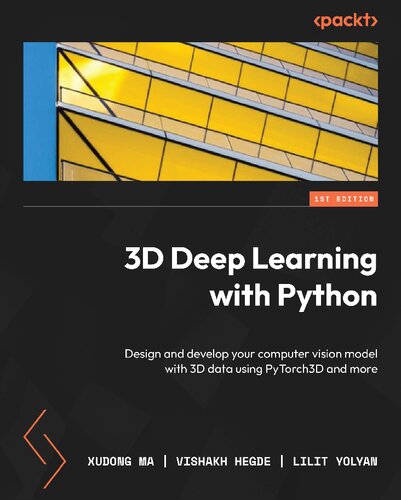

Most ebook files are in PDF format, so you can easily read them using various software such as Foxit Reader or directly on the Google Chrome browser.
Some ebook files are released by publishers in other formats such as .awz, .mobi, .epub, .fb2, etc. You may need to install specific software to read these formats on mobile/PC, such as Calibre.
Please read the tutorial at this link: https://ebookbell.com/faq
We offer FREE conversion to the popular formats you request; however, this may take some time. Therefore, right after payment, please email us, and we will try to provide the service as quickly as possible.
For some exceptional file formats or broken links (if any), please refrain from opening any disputes. Instead, email us first, and we will try to assist within a maximum of 6 hours.
EbookBell Team

5.0
78 reviewsWith this hands-on guide to 3D deep learning, developers working with 3D
computer vision will be able to put their knowledge to work and get up
and running in no time.
Complete with step-by-step explanations of essential concepts and
practical examples, this book lets you explore and gain a thorough
understanding of state-of-the-art 3D deep learning. You’ll see how to
use PyTorch3D for basic 3D mesh and point cloud data processing,
including loading and saving ply and obj files, projecting 3D points
into camera coordination using perspective camera models or orthographic
camera models, rendering point clouds and meshes to images, and much
more. As you implement some of the latest 3D deep learning algorithms,
such as differential rendering, Nerf, synsin, and mesh RCNN, you’ll
realize how coding for these deep learning models becomes easier using
the PyTorch3D library.
By the end of this deep learning book, you’ll be ready to implement your own 3D deep learning models confidently.